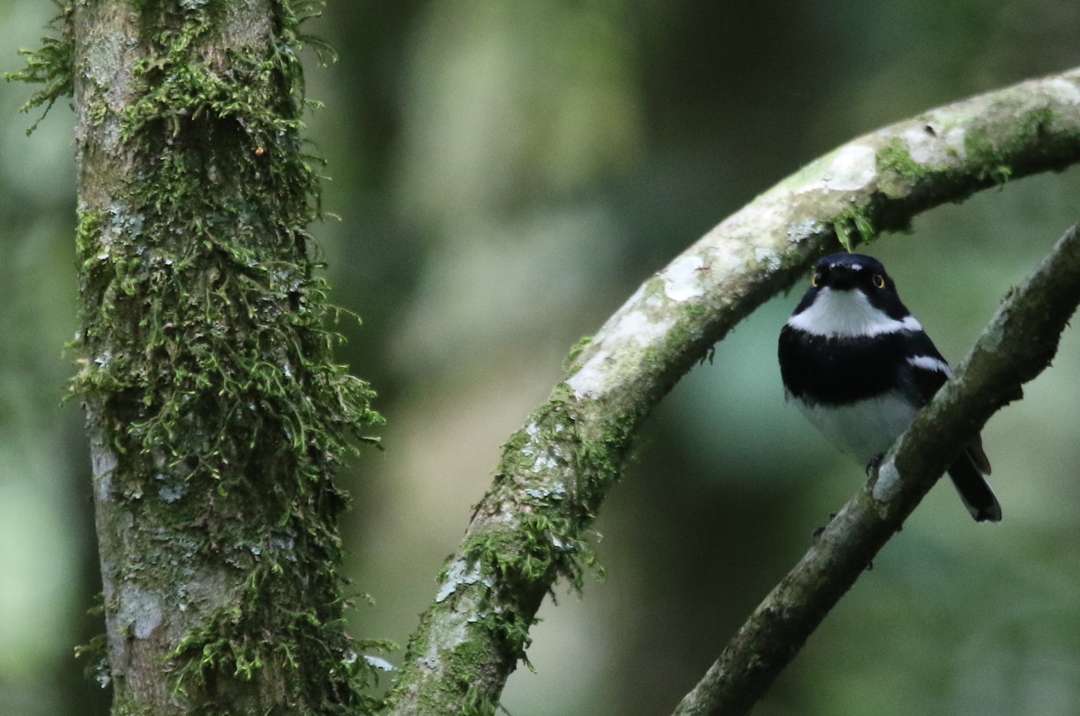Rwanda’s meticulous handling of the current coronavirus pandemic, and the opening up of their tiny, densely populated country to international tourism, is something of a benchmark for even the most developed nations to aspire to. I have to admit that I thought that Rwanda would be one of the last African countries to open up their borders. After all, the nation is home to a fragile, endangered population of mountain gorillas. It would almost certainly be catastrophic should they become infected by the devastating disease. And yet, as I recently experienced first-hand, Rwanda is fast positioning itself as a model in COVID-19 safety, efficiency and compliance.
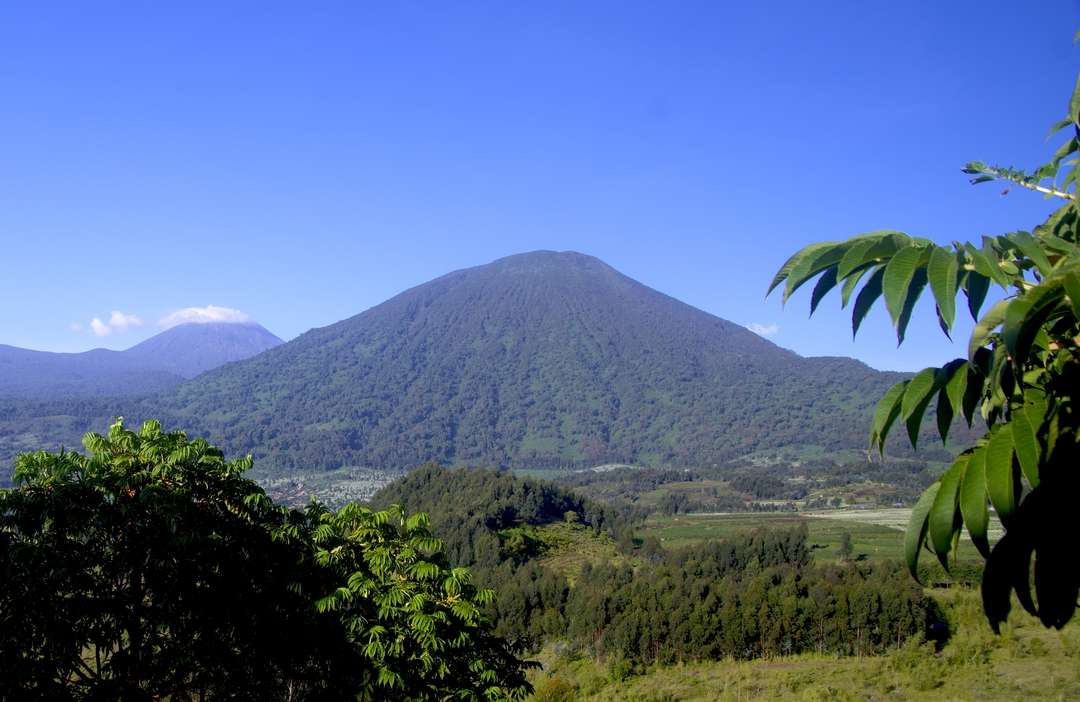
On arrival at Kigali International Airport, each visitor is greeted by a COVID robot that checks temperatures and then moves on to the next visitor. It remembers who has been checked and attempts to monitor each arriving person.

COVID robot at Kigali International Airport
Mandatory COVID tests in-country are conducted effortlessly – and with no painful probing up the nostrils! The mouth-swab tests generate results in less than twenty-four hours. The mask compliance amongst the general population is phenomenal, curfews are adhered to and hygiene protocols are strictly enforced everywhere. The in-country testing is a minor distraction from the wonders that the country offers. So let’s put COVID issues aside and delve into the treasure chest of Rwanda’s remarkable attractions.
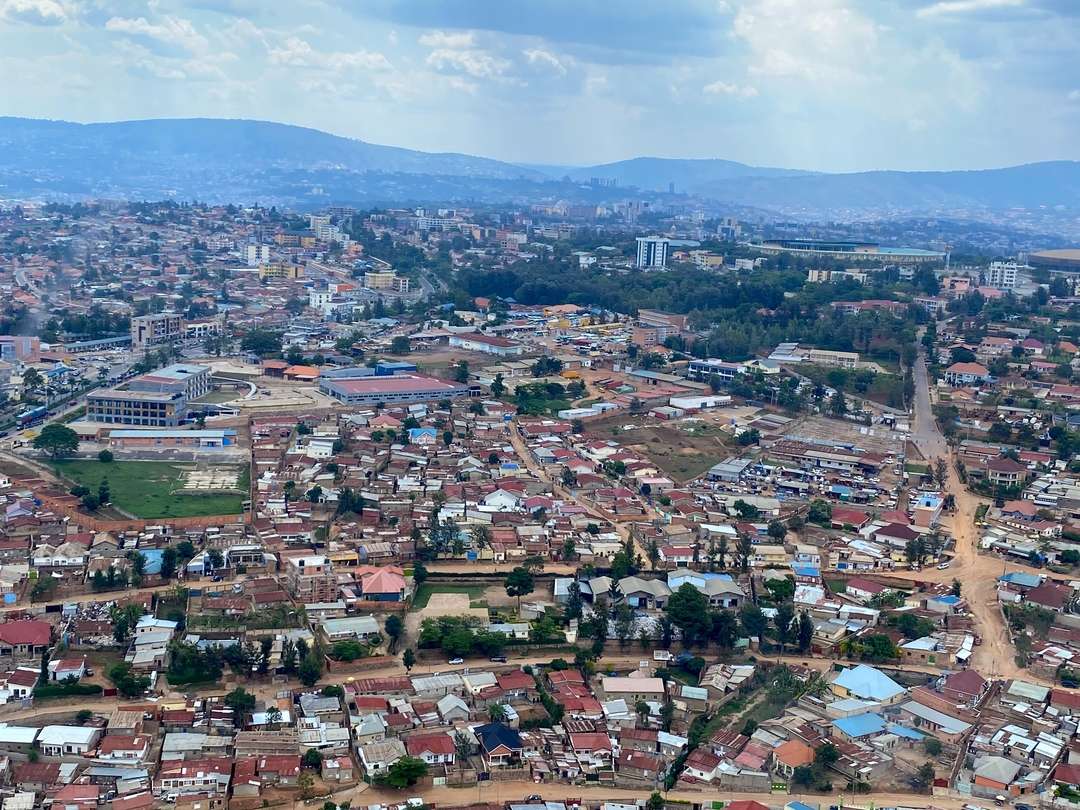
Kigali, Rwanda photographed from the air
In the past, some visitors to Rwanda may have viewed the destination as the “gorilla express”. In other words, go see the gorillas and then leave and go elsewhere to continue your safari. But today, there is so much more to experience and a week or longer stay in Rwanda is now not only on the cards but highly recommended. Picture this… a mandatory night in Kigali – one of the cleanest and safest African cities – as you quarantine until you get your negative COVID test back. Then three nights at Magashi in Akagera National Park, followed by three nights at Bisate in Volcanoes National Park; there is also the opportunity to pop in at Wilderness Safaris’ newest Rwandan community and reforestation ecotourism project, run in partnership with the Forest of Hope Association (FHA), at Gishwati-Mukura National Park, close to Lake Kivu.
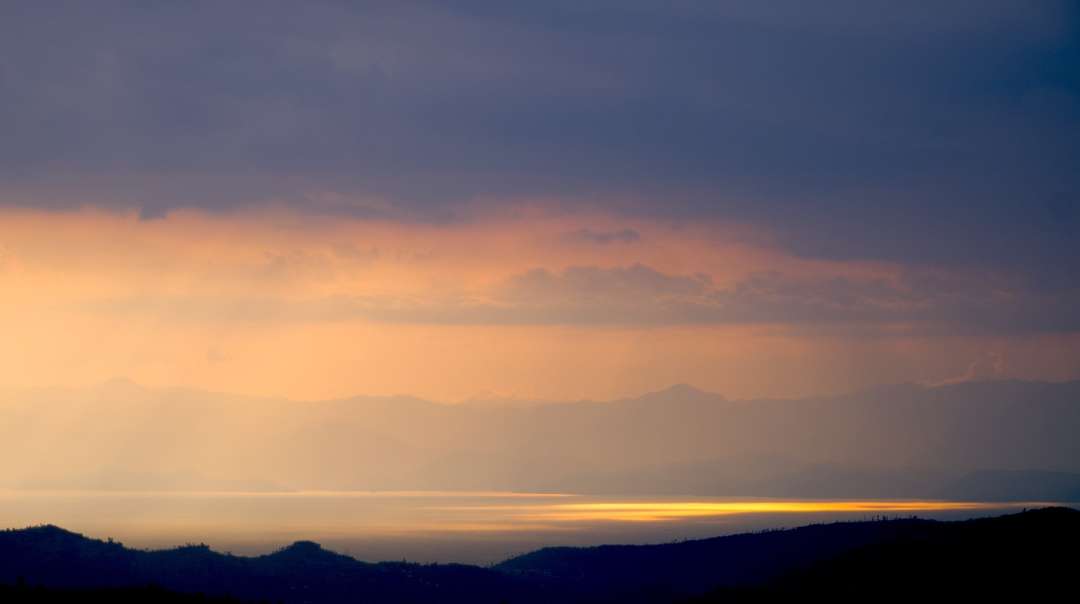
Lake Kivu, Gishwati-Mukura National Park
Taking the 25-minute helicopter flip from Kigali into Magashi is visually stunning as the landscape changes from the densely populated neighbourhoods of Kigali to rural homesteads to the green wetlands of Akagera National Park. Magashi is situated next to the beautiful Lake Rwanyakazinga, and the concession is in one of the most productive wildlife areas of the park, with regular sightings of leopard, lion, elephant, spotted hyaena, black rhino and buffalo. Add to that one of the largest densities of hippo in Africa, and a very diverse representation of antelope species, and you have an exceptional safari experience.
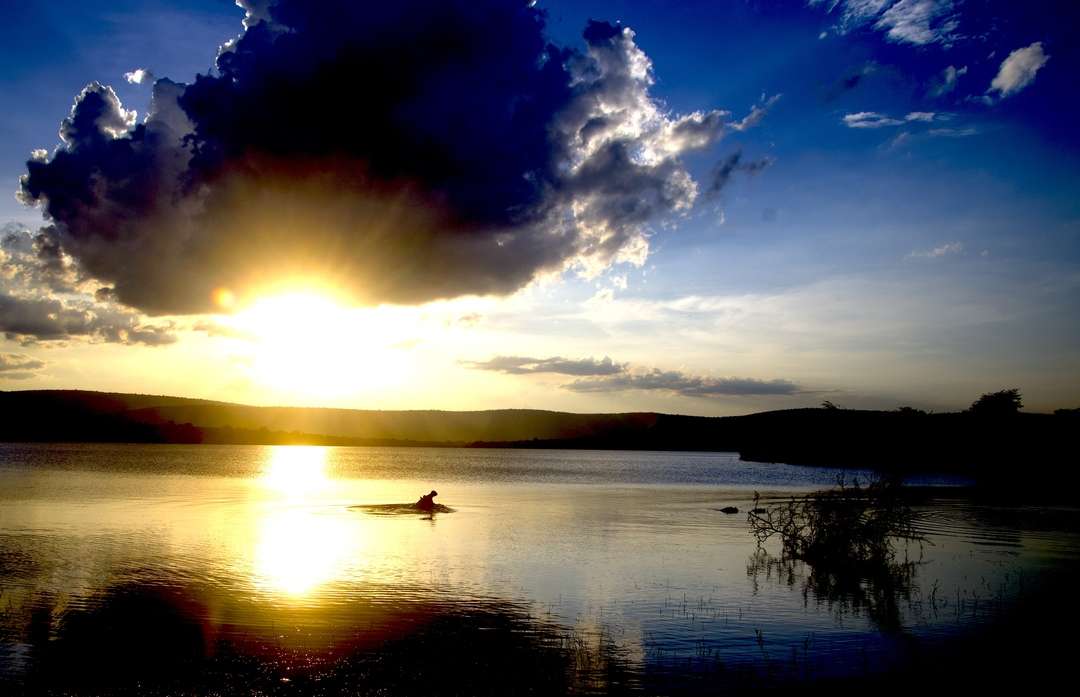
Hippo in Lake Rwanyakazinga at Magashi, Akagera National Park, Rwanda
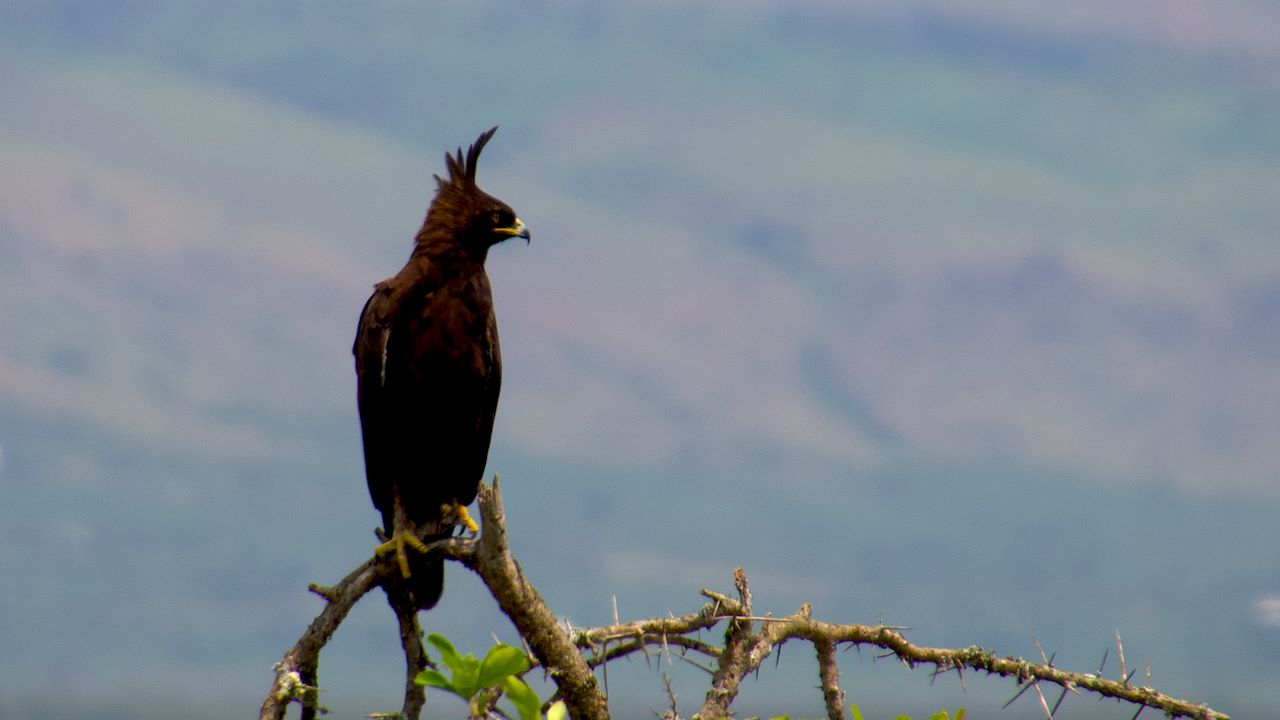
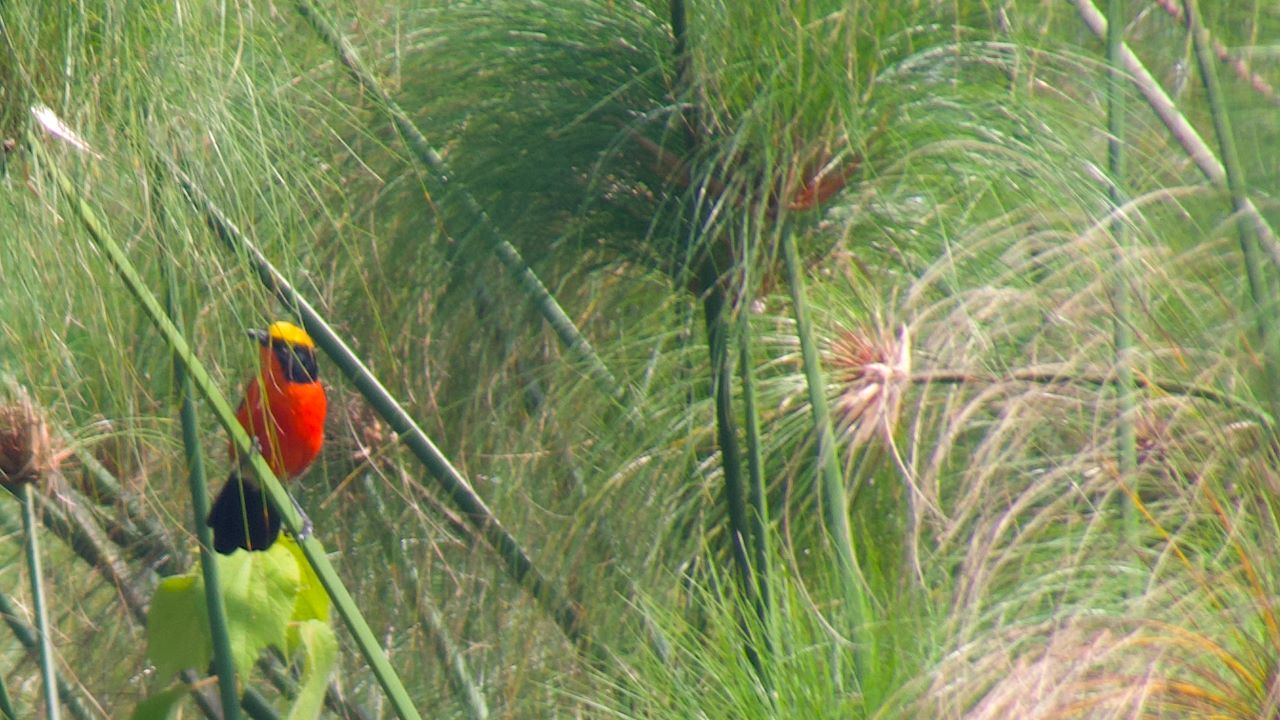


Long crested eagle and papyrus gonolek
But I am also here for the birds and most excited about the opportunity to see special species like the stunningly beautiful papyrus gonolek. An early morning boat trip reveals no less than eight of these feathered jewels, although securing a good photo of one is another story! The bird diversity is phenomenal, as the park’s 530-odd species list attests.
And now it’s back to Kigali to begin the beautiful drive to Volcanoes National Park…
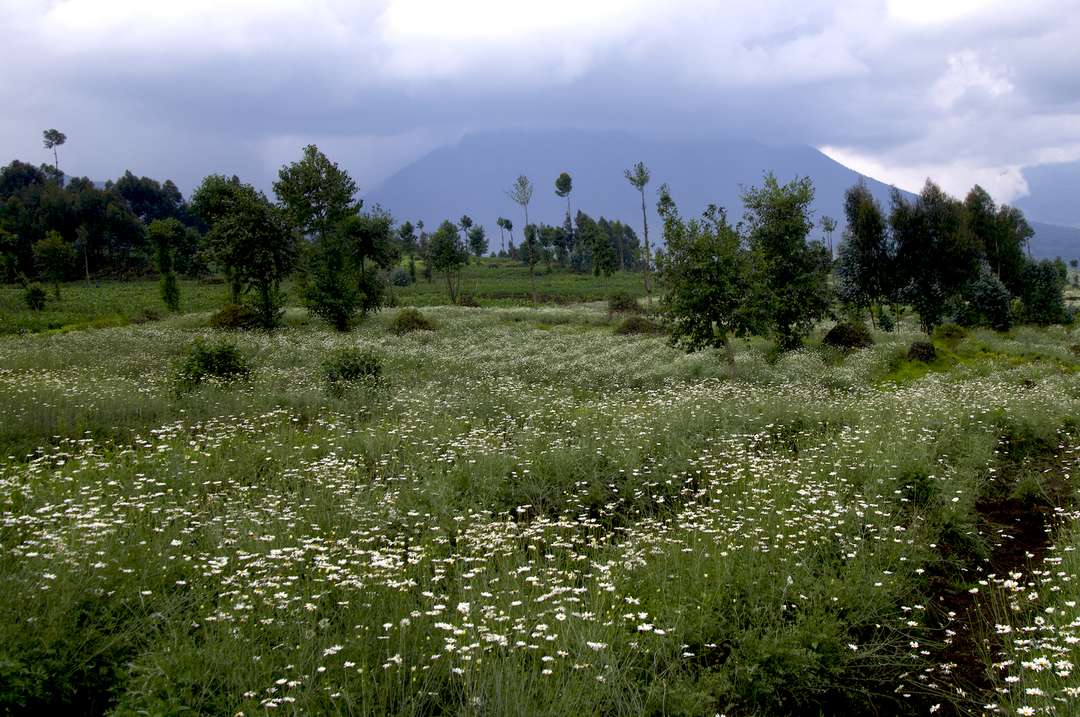
Pyrenthrum field at Bisate, Rwanda
On arrival at Bisate Lodge we soak in the luxury of the camp and then embark on a late afternoon hike on the nature trail, hoping to get a glimpse of side-striped jackal or even serval or golden monkeys. These species have started to visit the lodge regularly, a testament to the successful restoration of habitat around the lodge. A sumptuous dinner and welcome sleep follow as we adjust to the altitude.
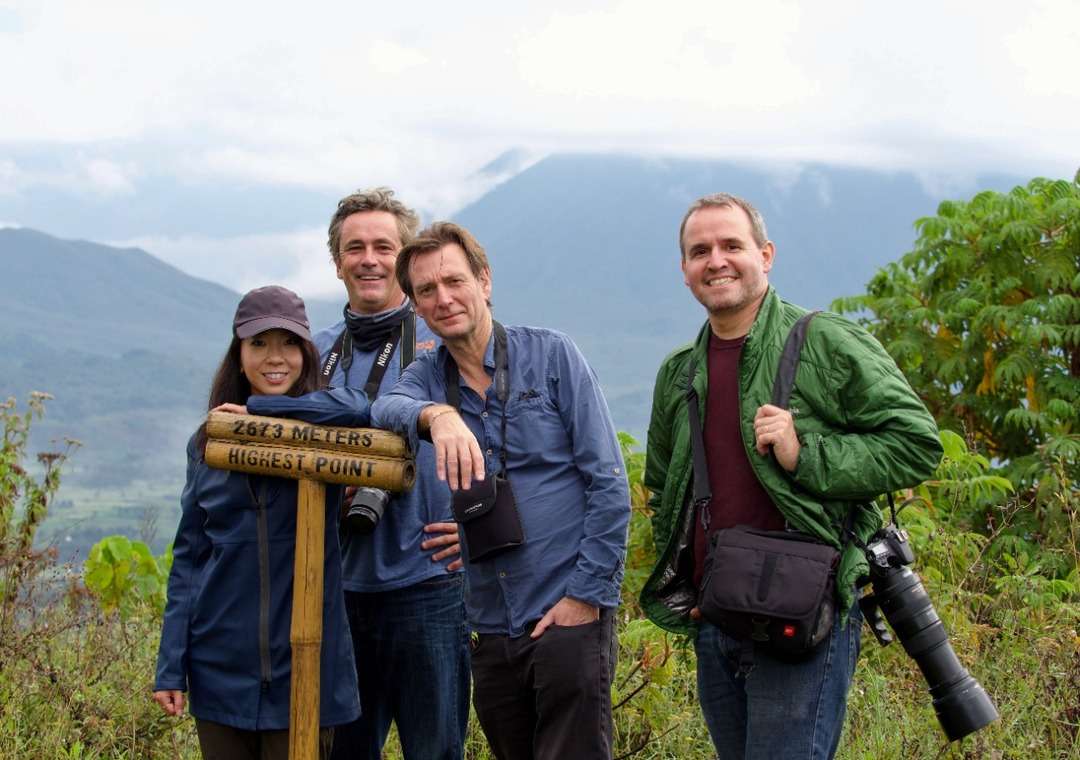
Bisate nature trail
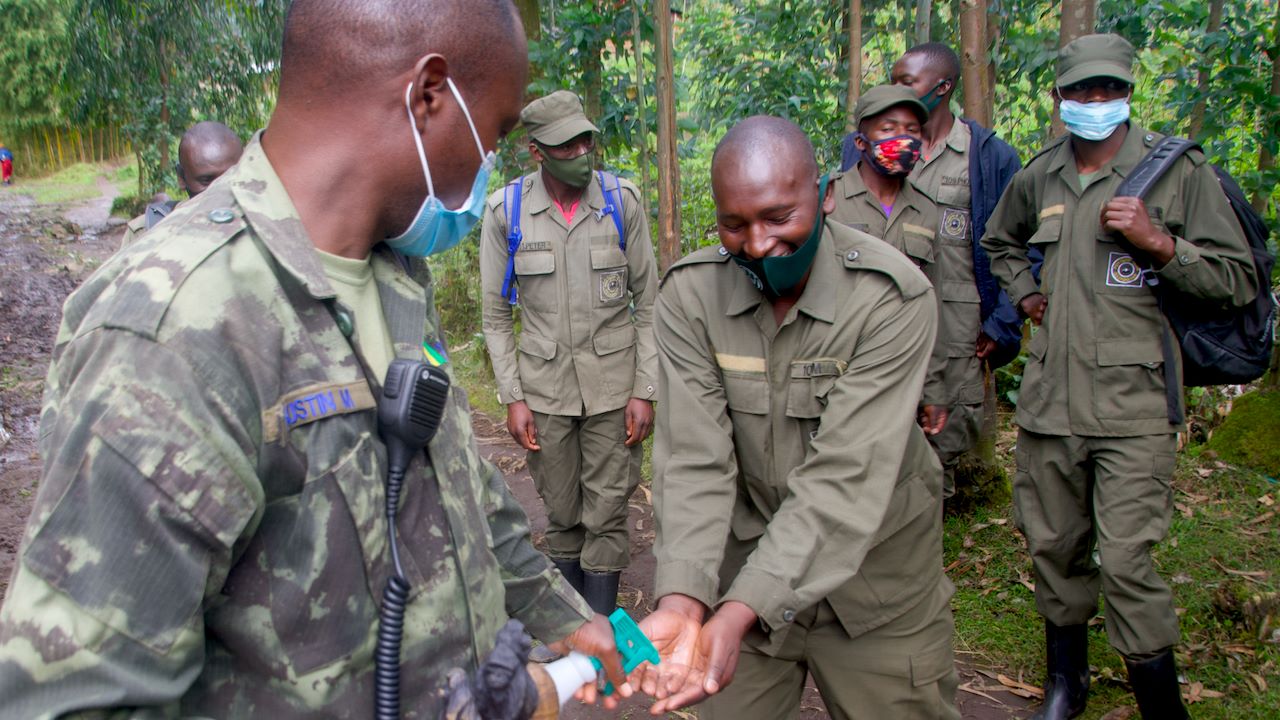
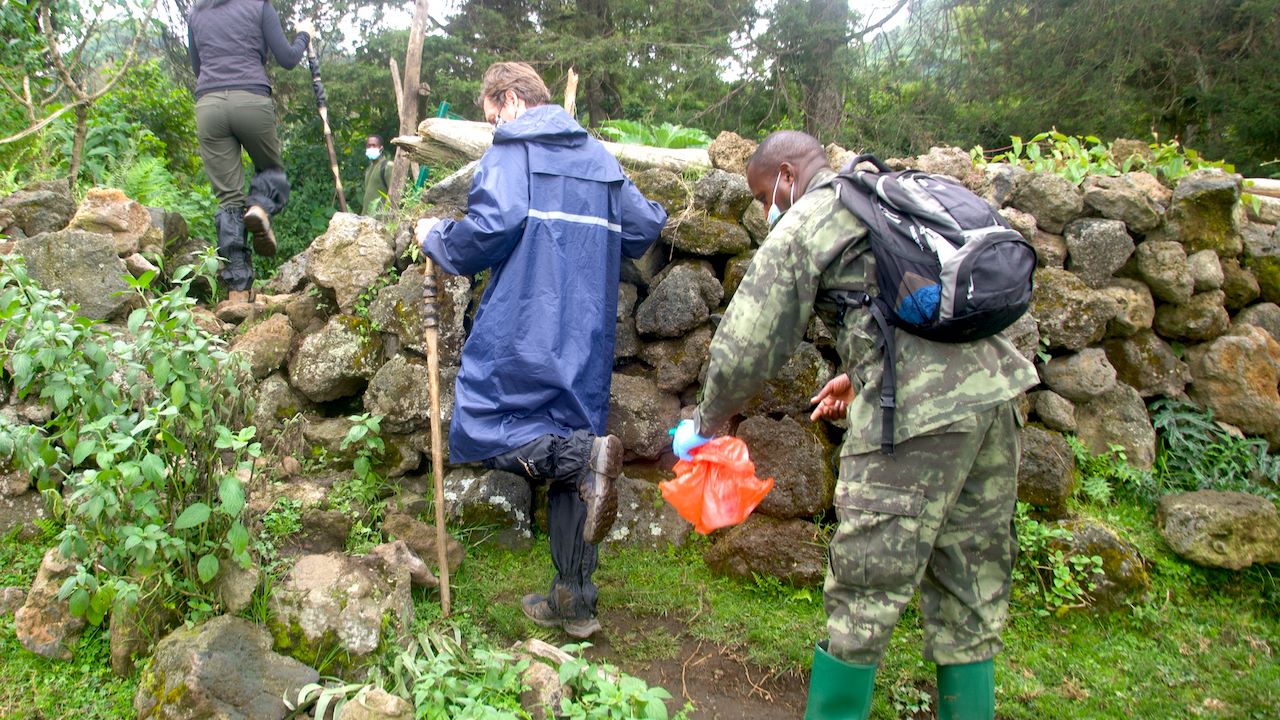


COVID protocols during gorilla tracking experience
It’s the gorillas that are the stars of the show at Bisate. It’s now early morning as we step out of our vehicle close to a few rural homesteads. Our guide gathers us together and we begin trekking through beautiful pyrethrum fields towards the sexiest volcanoes on earth. A chatter of local kids runs up to greet us. We walk for about twenty minutes through the fields on a gentle upward trajectory until we reach a nondescript stone wall, the border of Volcanoes National Park. Here our feet and shoes are sprayed with a disinfectant and we are briefed on what to expect in the next few hours.
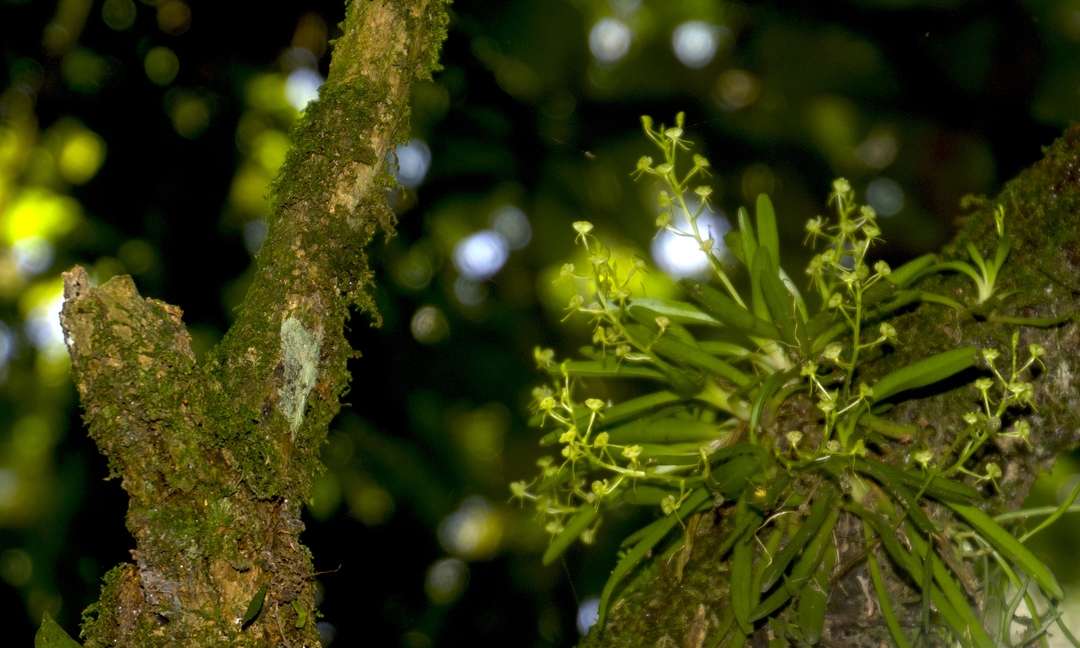
Epiphytic orchid
We enter the park and it feels as if we have been transported back to Jurassic times. Tall hagenia trees tower above us, groaning with the weight of countless species of dangling epiphytic plants. We plod onward and upward. All around us ferns crowd the barely discernible path as we alternate through thick jungle patches and more open areas.
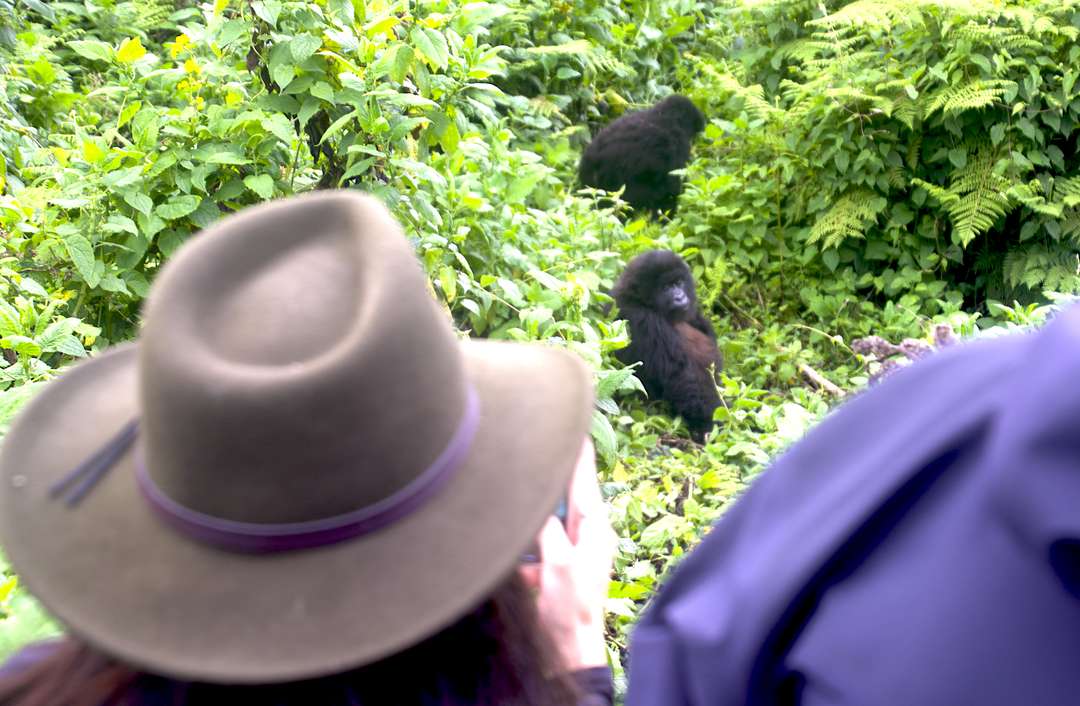
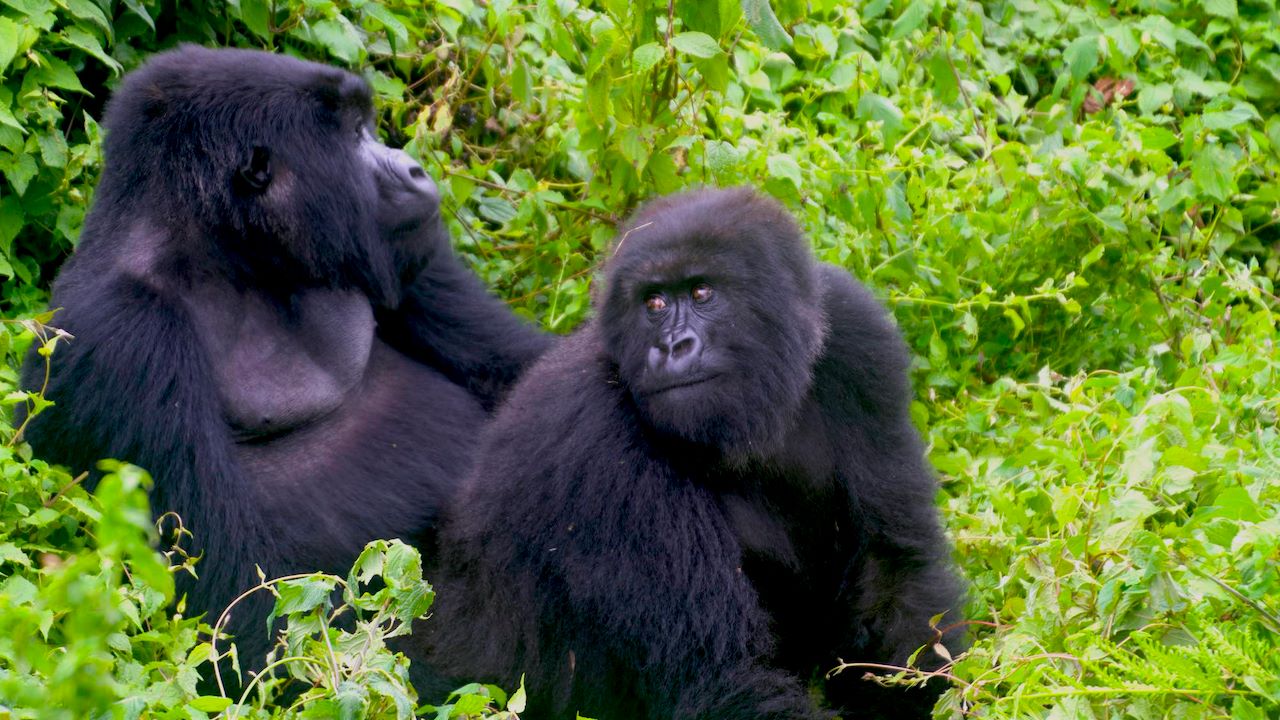



A last patch of forest and we are blinded by sunlight as we reach another open area, dominated by ferns and nettles. Our guide points and whispers, “There they are!” Nestled in a clearing just 30 feet from us is a family of mountain gorillas, one of the rarest large mammals on the planet. And they are doing just what families do. Dad appears to be alternately feeding and dozing. Several youngsters are playing roughly with each other and a mother is quietly caressing an infant.
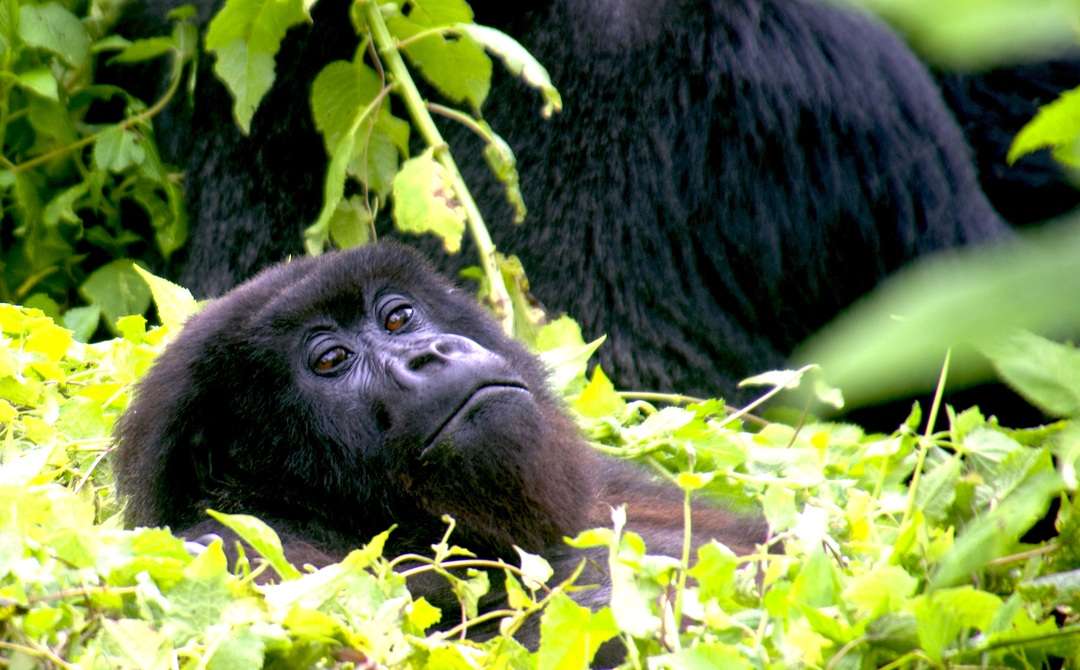
A young gorilla catches my eager gaze and looks me directly in the eyes. His dark orange eyes are welcoming, intelligent and there’s something familiar about his gaze. We have been told that we cannot approach closer than 30 feet but this does not stop the gorillas from coming in for a closer look at their strange cousins. With my heart in my mouth I watch as the curious youngster strides forward, with several of the group in tow. He walks right past us on the path. I am entranced and feel so privileged that these gentle animals, that share 98% of our DNA, are allowing us a glimpse into their world.
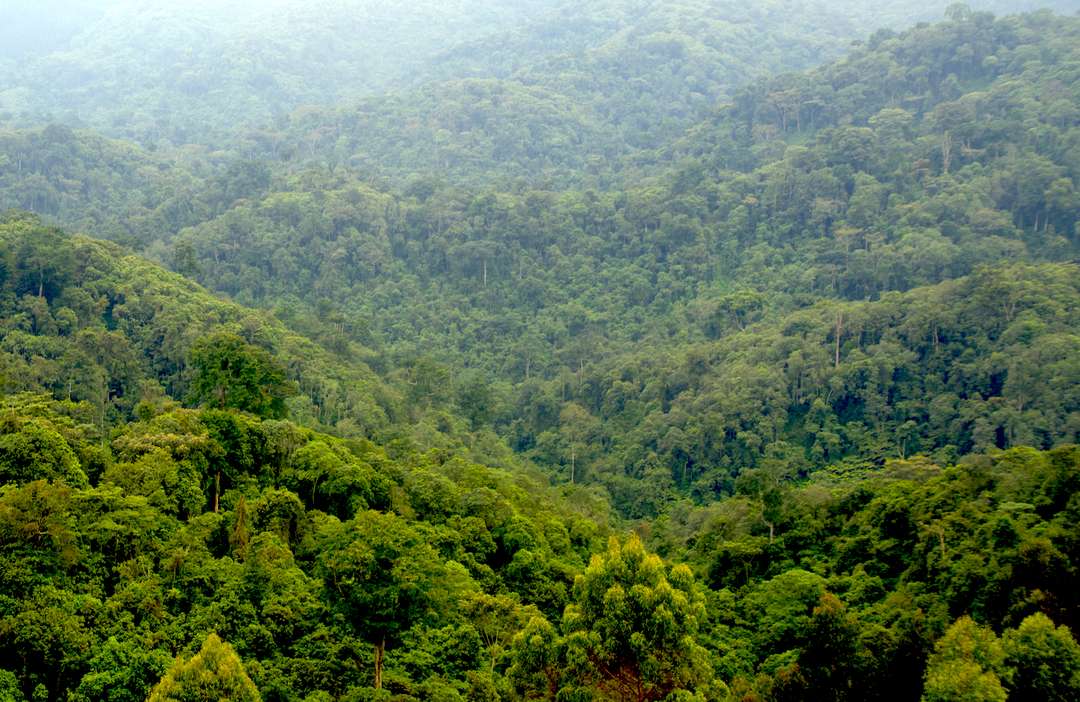
Gishwati Forest, Rwanda
We spend a glorious hour with the gorillas before they move off towards another patch of delicious nettles. We watch them leave, grateful that we have just experienced possibly the best wildlife encounter on our beautiful planet. What a privilege when one considers that more people visit Harrods in London on a single day than get to see Rwandan mountain gorillas in a year.
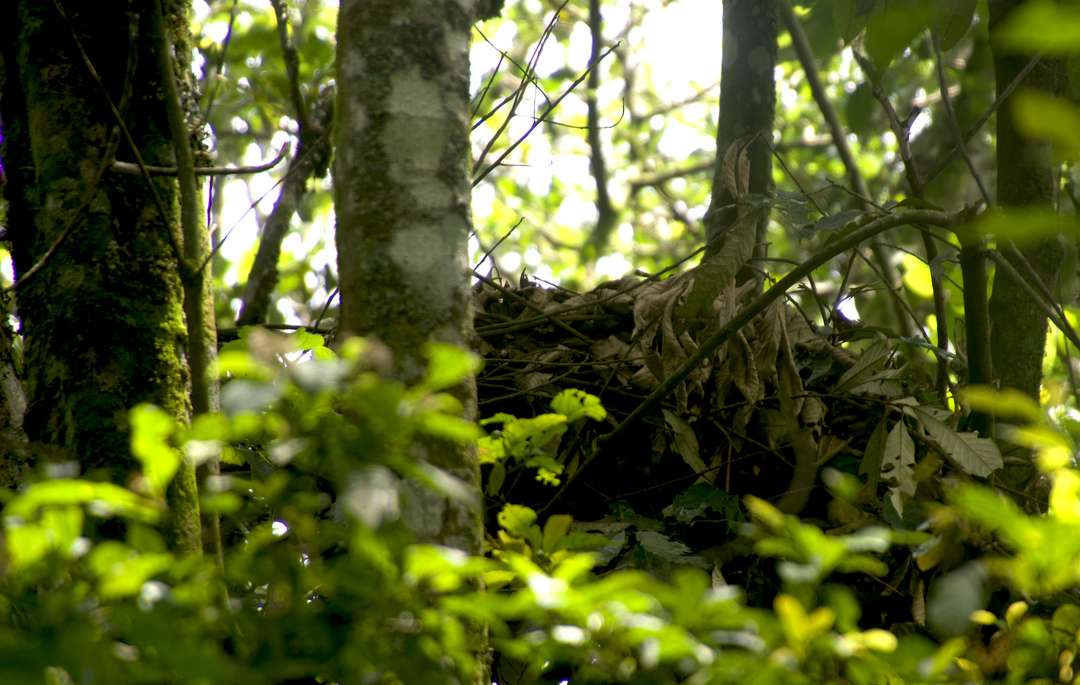
Chimpanzee nest
But our journey to remarkable Rwanda is far from over. Imagine spending three nights at the newly opened guest house in Gishwati Natural Forest, an easy and stunning two-hour drive from Bisate, through rolling hills and emerald tea plantations. Full disclosure – we were only there for one day – but wish we could have stayed more. This is one of the most important conservation projects that Wilderness Safaris has been involved in. Historically this remnant patch of forest extended all the way to Nyungwe in the south and wrapped around Lake Kivu and joined up with forests in the Congo. Today, just a fraction remains.
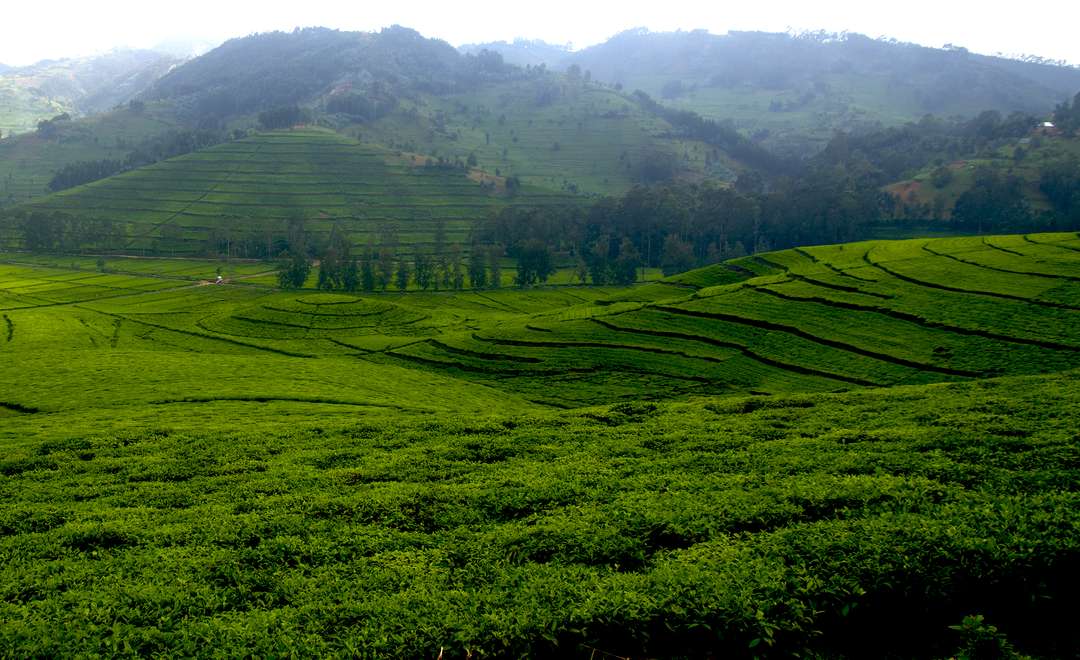
Tea plantation
The main attraction at Gishwati is the 30-odd eastern chimpanzees that frequent this precious patch of forest. Right now they are very difficult to see as the monitoring programme only started about a year ago. But give it some time and a future three-night stay should almost guarantee excellent sightings of these fascinating great apes. Currently a guest house run by the FHA is open for travellers wishing to explore the area.
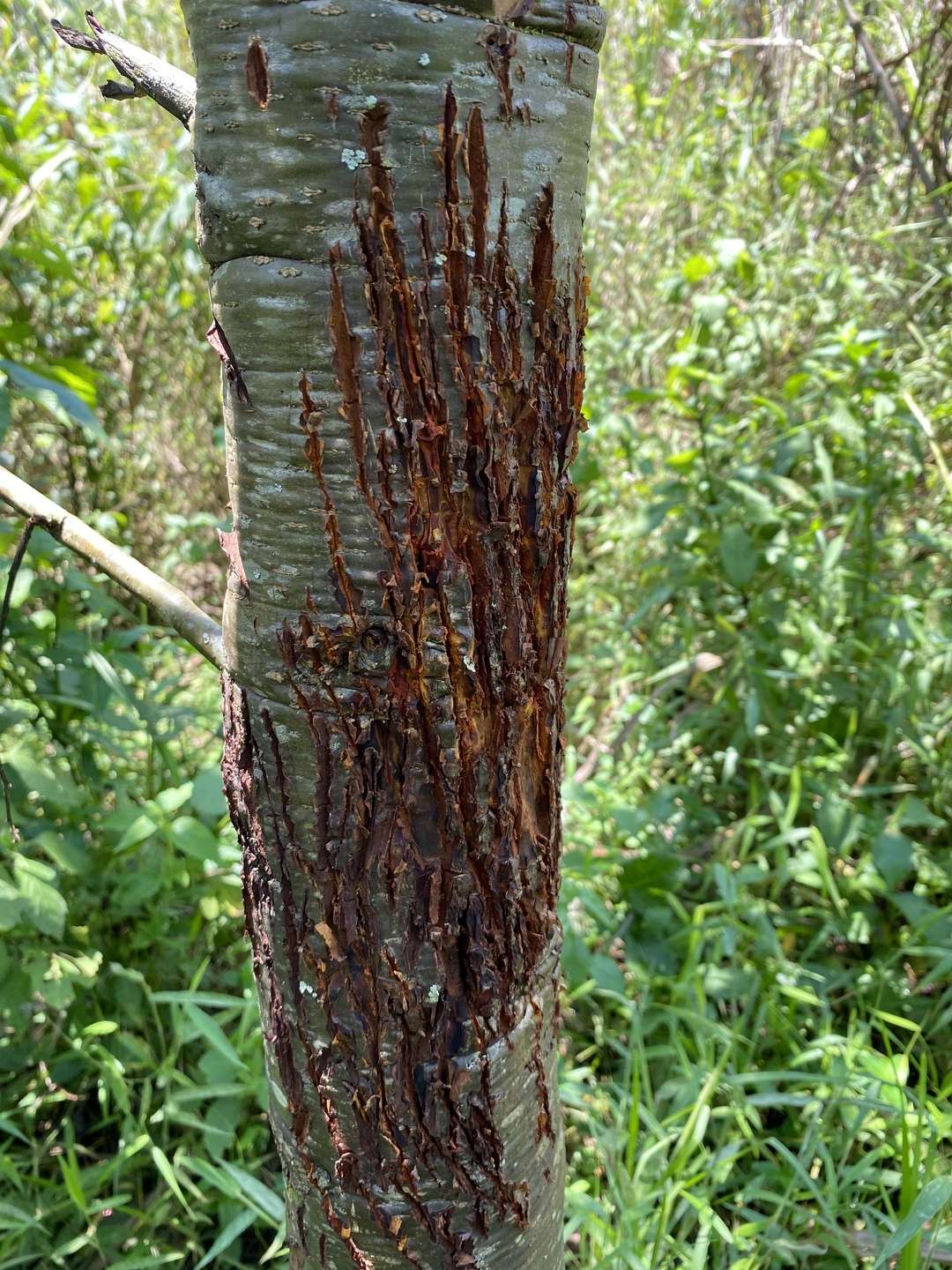
Serval scratch marks on tree trunk
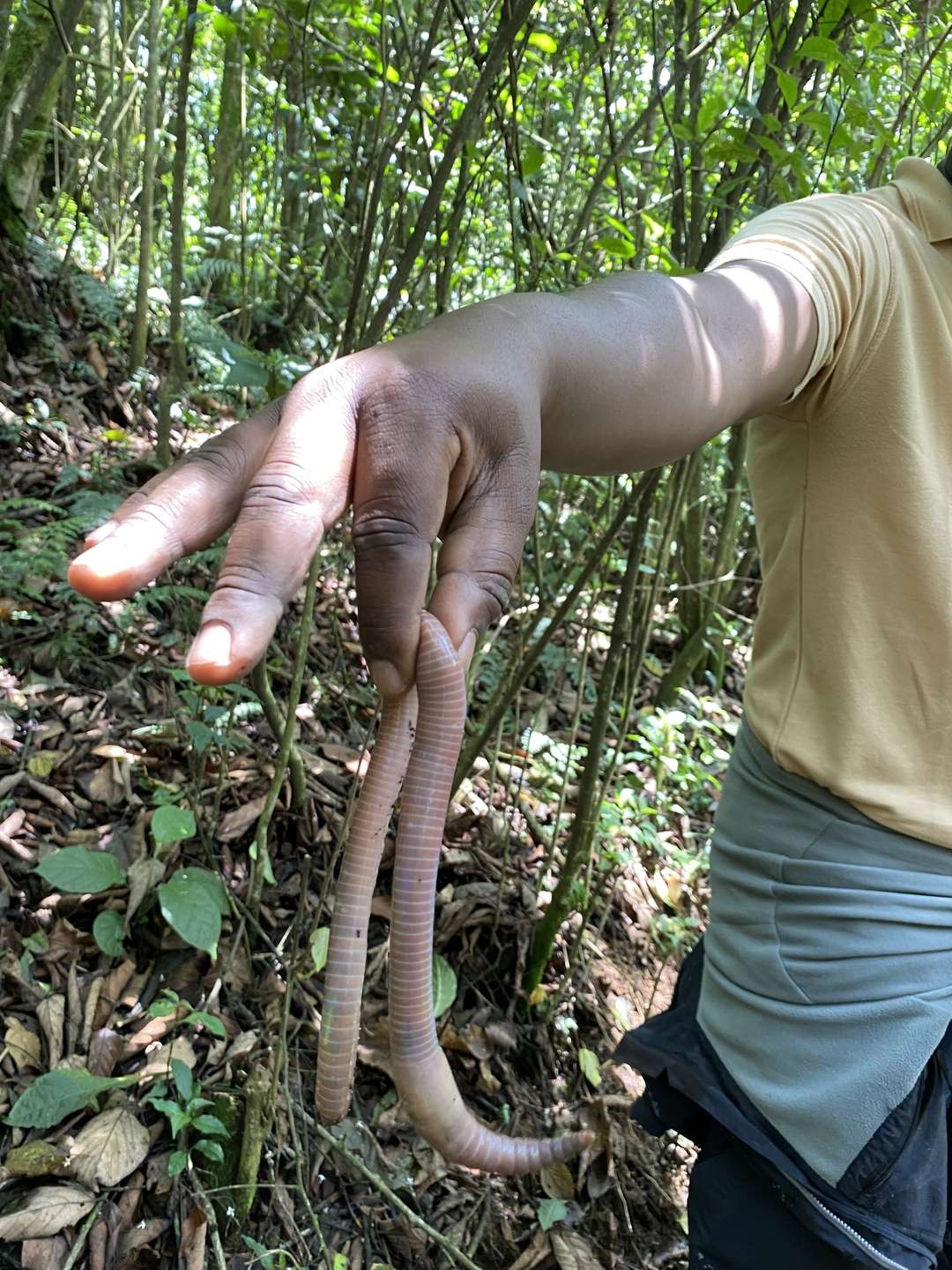
Giant earthworm
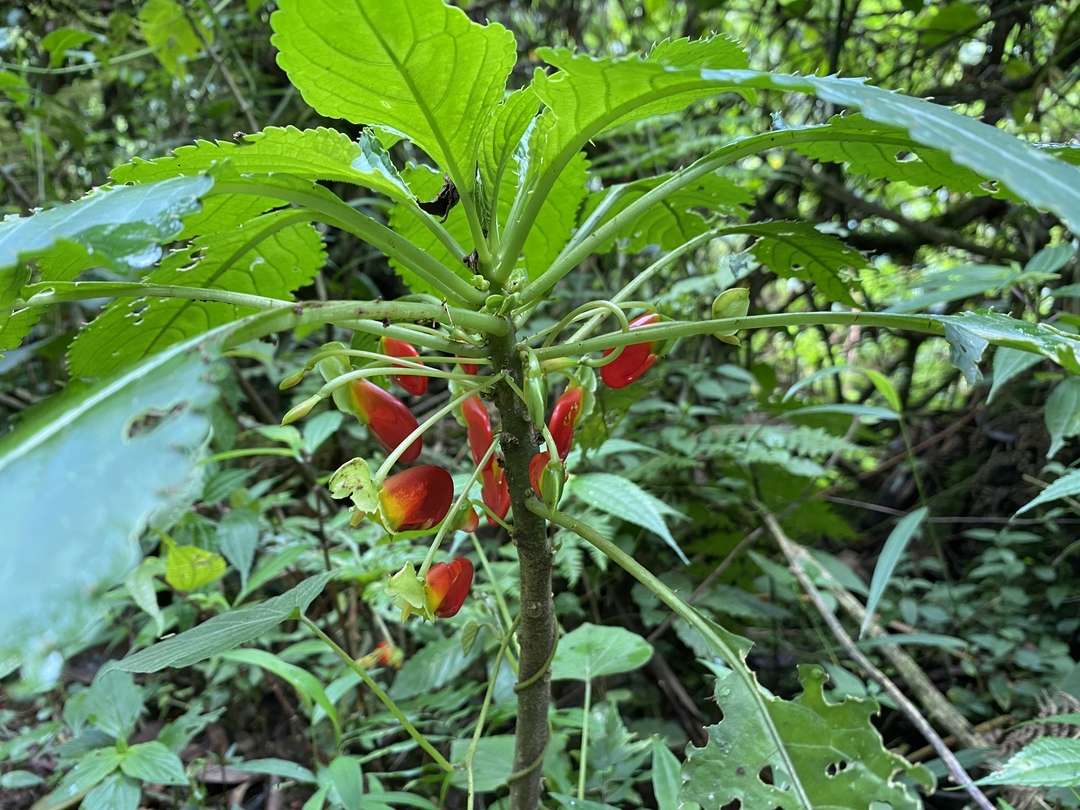
Impatiens niamniamensis
But chimps or no chimps the forest here is simply stunning. A supposed one-hour stroll turns into a three-hour hike as we stop every few metres to admire a new butterfly, plant, frog or bird. There’s the impossible to pronounce Impatiens niamniamensis, giant earthworms, bizarre slugs, the weird seeds of the Ushwati tree, after which the forest is named, range-restricted bird species like the tiny Rwenzori batis and clear evidence of serval markings on a tree trunk. Oh, and let’s not forget the vibrant fungi and epiphytic orchids. And yes, there is also evidence of chimpanzees. Their nests are visible everywhere, but I like the fact that this forest is so alive with life that chimps are simply a bonus if we see them. And see them we don’t, but I leave the forest day-dreaming of the infinite possibilities of this magical place.
Rwenzori batis photo courtesy Win Schumacher
Leaving Kigali and knowing that I shall soon be back in the US gives me a heartache and a headache. How much can we learn from this tiny country that has risen from the devastation of genocide to show the world how to handle a global pandemic effectively? And next time someone asks me where they should go after seeing the gorillas in Rwanda I shall reply, “Go to Rwanda”.
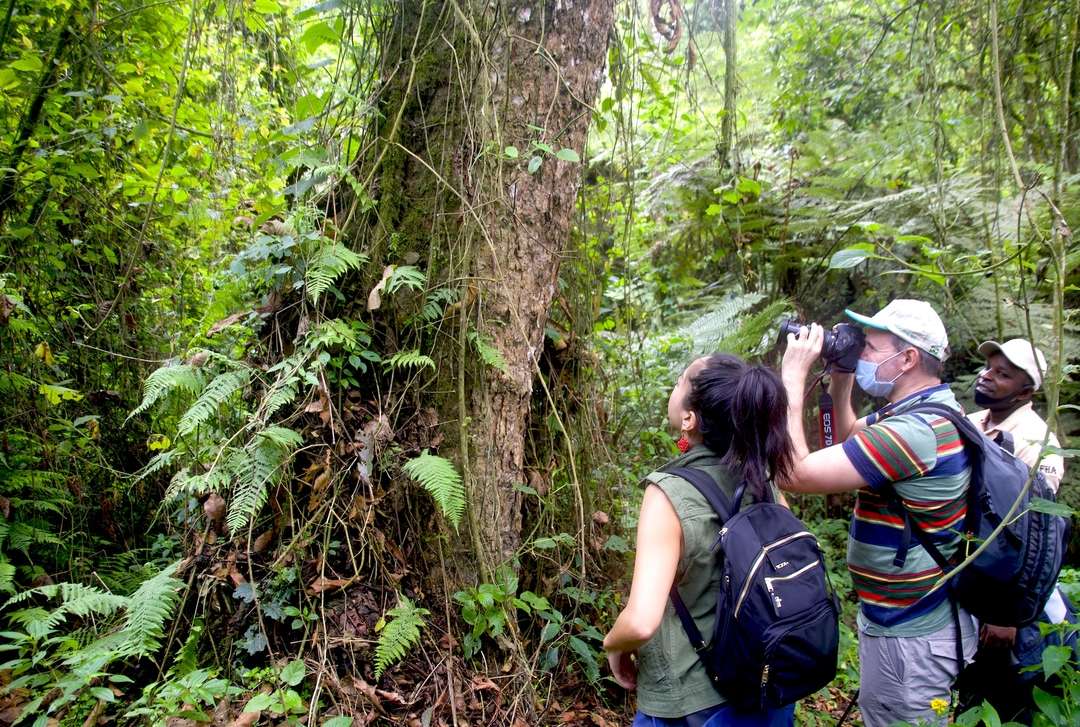
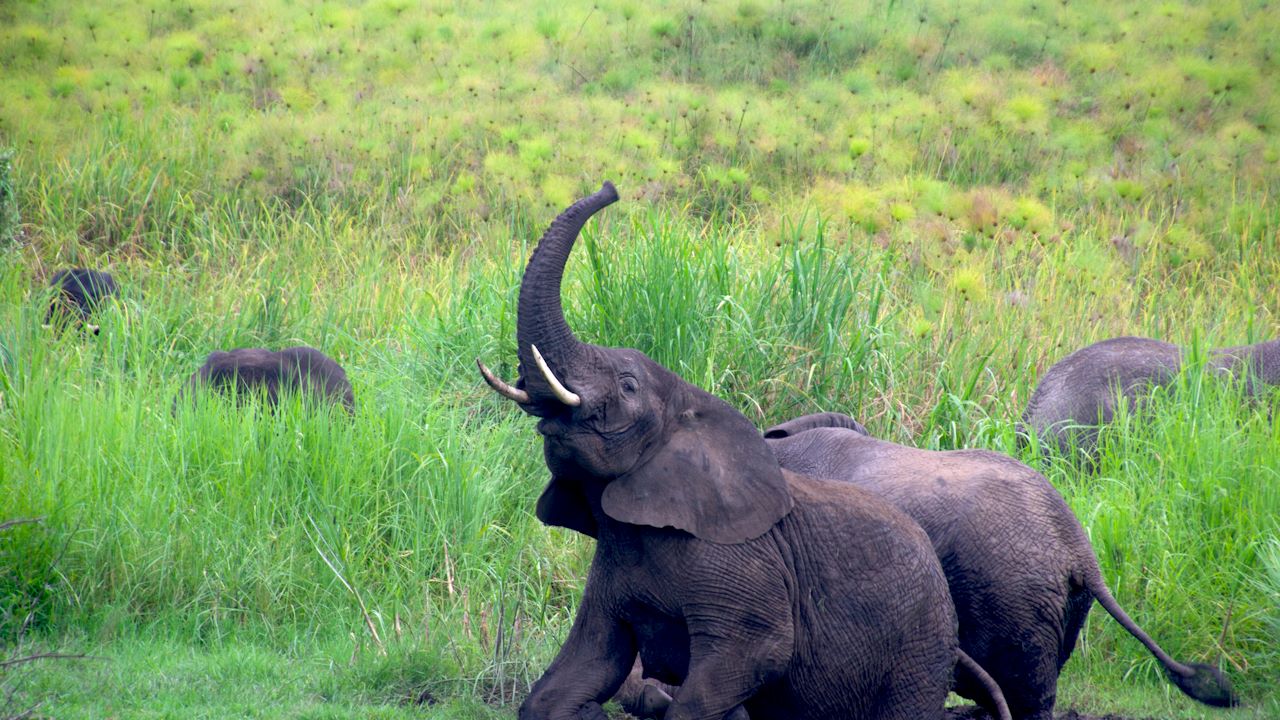



Elephants at play and lion sleeping
Magashi has the country’s first open game drive vehicles, and the camp has actually been running at high occupancies thanks in part to the many Rwandans who have come to experience an open safari game drive in their own country.

Fish eagle in flight
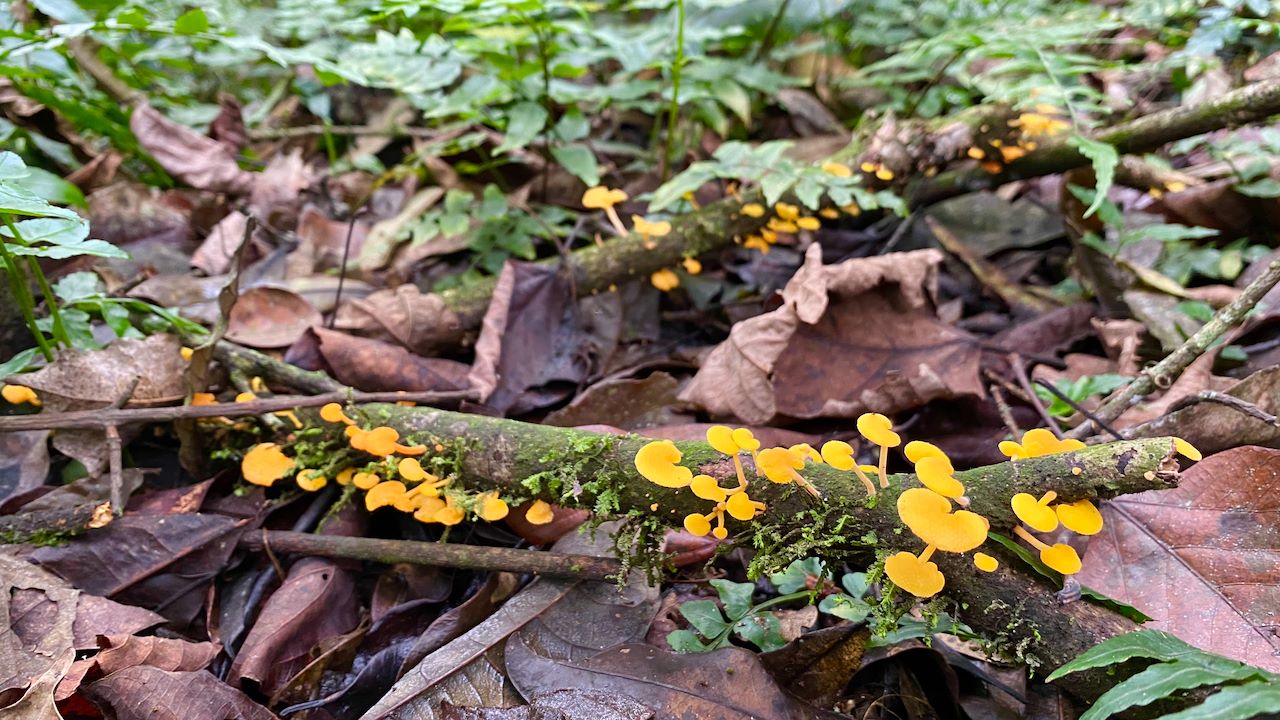
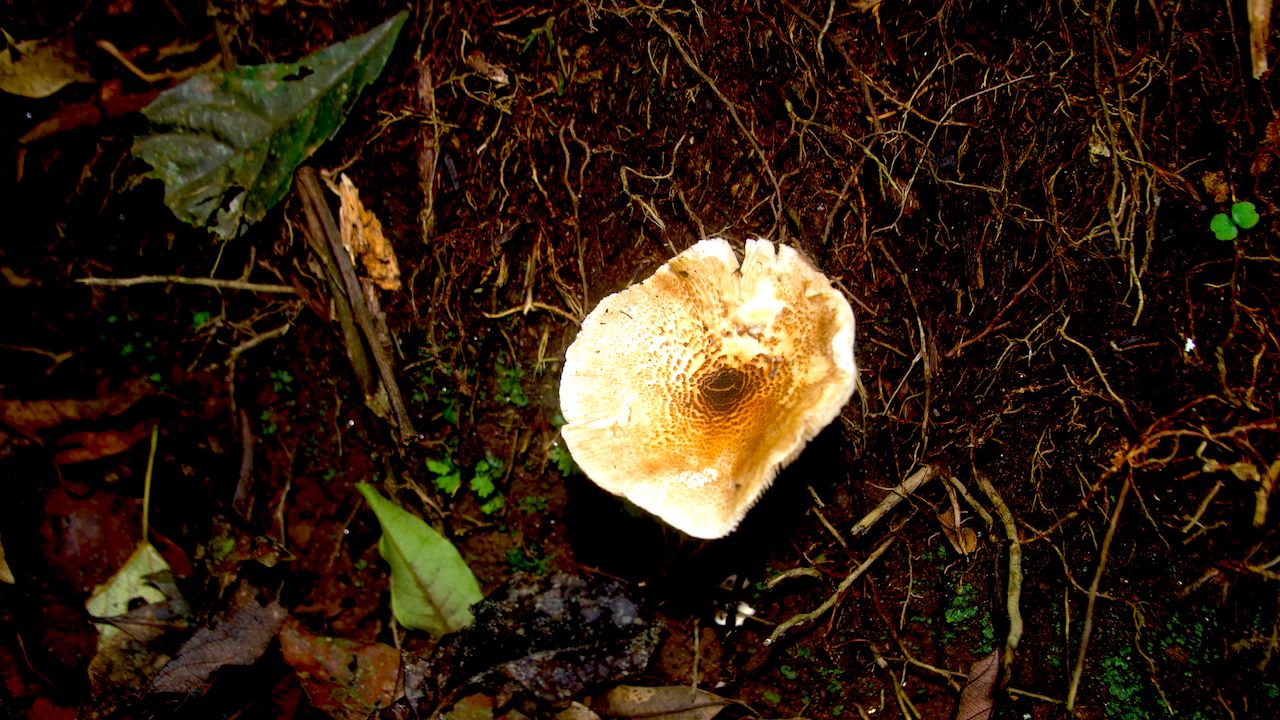




Various species of fungi found in the Gishwati forest
Written and photographed by James Currie
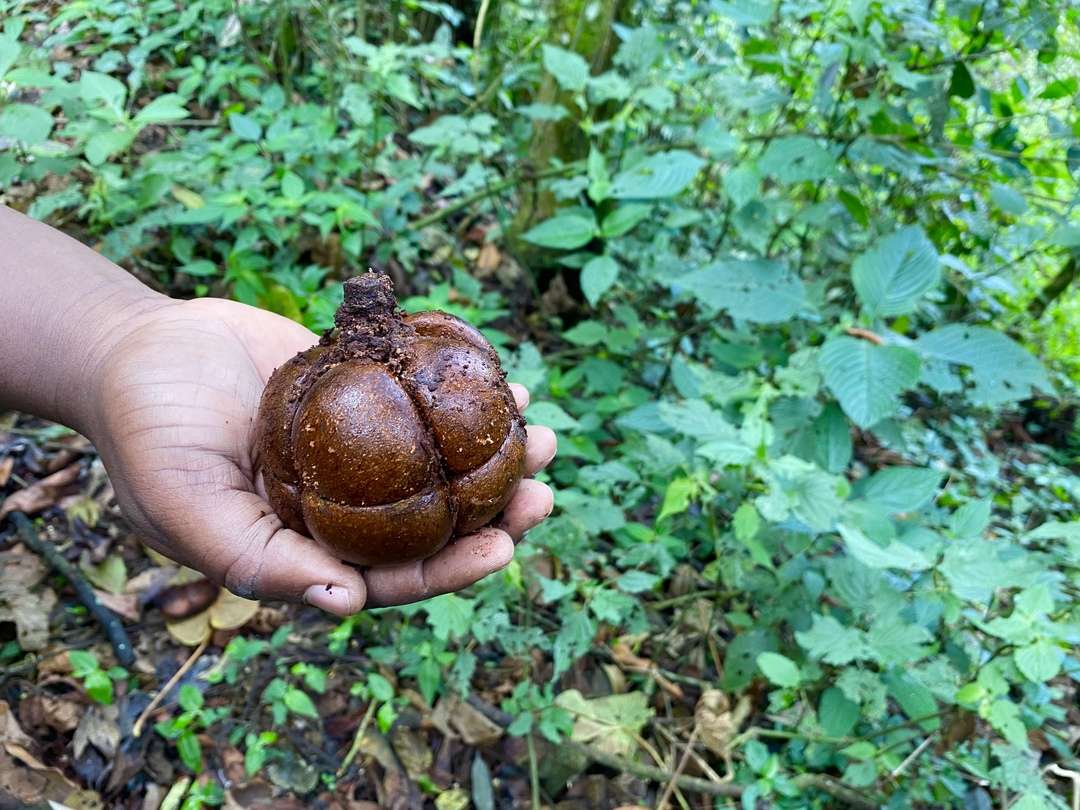
Ushwati seed

Let’s plan your next journey
Ready?
When we say we’re there every step of the way, we mean it, literally. From planning the perfect circuit, to private inter-camp transfers on Wilderness Air, and easing you through Customs. We’re with you on the ground, at your side, 24-7, from start to finish. Ready to take the road less travelled? Contact our Travel Designers to plan an unforgettable journey.
